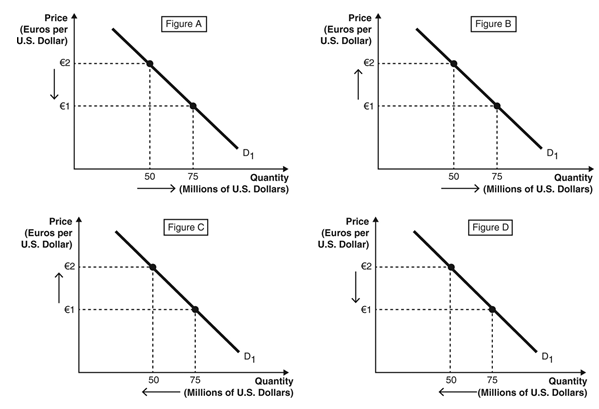The arrows in Figures A–D represent possible movements of the exchange rate (euros per U.S. dollar) and the quantity of U.S. dollars buyers are willing and able to buy. Use these figures to answer the following questions. 
-An appreciation of the euro against the U.S.dollar is represented by Figure ________,and a depreciation of the U.S.dollar against the euro is represented by Figure ________.
Definitions:
Clastic Rocks
Sedimentary rocks composed of fragments of pre-existing rocks, transported and deposited by water, wind, or ice.
Shale
A fine-grained sedimentary rock formed from clay and mud, often used as a source of oil and natural gas.
Diagenesis
The physical, chemical, and biological changes that sediment undergoes after initial deposition, excluding surface erosion and deep metamorphism.
Talus
Loose rock fragments upon a steep slope, or an accumulation of such fragments.
Q26: Stimulus spending in 2009 was used for<br>A)
Q71: If the U.S. dollar _, it becomes
Q79: Currency _ occurs when a currency decreases
Q96: You receive a bonus check from your
Q103: Calculate M1.
Q107: As compared to a tax cut, an
Q238: Suppose the nation's price level rises as
Q263: Explain the connection between the vertical long-run
Q334: Part of the lag in monetary policy
Q369: The average U.S. citizens' share of the